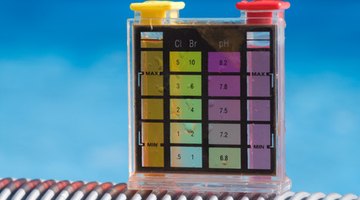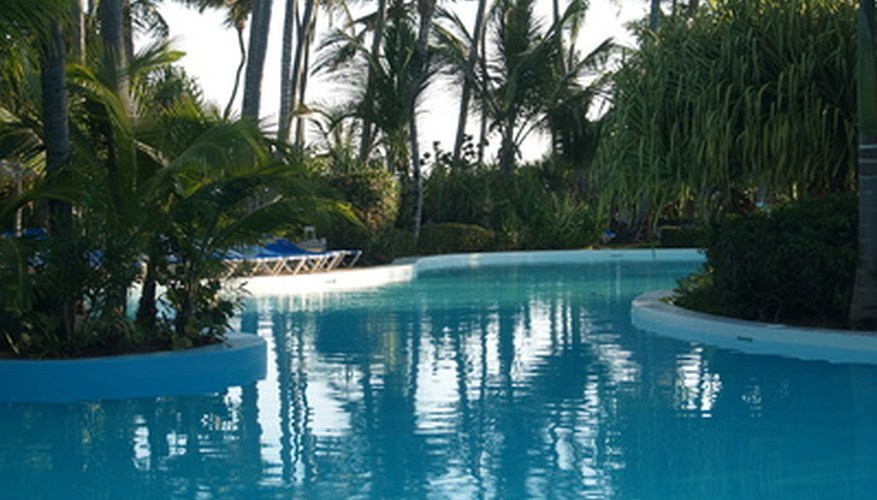Nobody invests in a swimming pool to go for a swim with algae flowers and lily pads, but maintaining a swimming pool is expensive. Chlorine is usually used to kill algae growth in swimming pools and hot tubs, but there's a difference between chlorine and chlorine bleach (a common household cleaning supply). Household chlorine bleach is not pure chlorine, in fact, it contains only 3 to 5 per cent chlorine. Chlorine purchased from a pool supply shop will contain anywhere from 20 to 95 per cent chlorine. To keep algae from growing in your swimming pool you need 2 to 4 parts per million of chlorine in the pool water, but because chlorine is a dangerous poison always measure chlorine levels. Using chlorine bleach instead of chlorine tablets is not dangerous to your health, but does require frequent testing to ensure that chlorine levels remain safe for swimming.

Determine how many gallons of water your swimming pool holds. According to the Pool Solutions website, one gallon of bleach will add 2 ppm of chlorine to a 135,000 litre (30,000 gallon) pool.
- Nobody invests in a swimming pool to go for a swim with algae flowers and lily pads, but maintaining a swimming pool is expensive.
- According to the Pool Solutions website, one gallon of bleach will add 2 ppm of chlorine to a 135,000 litre (30,000 gallon) pool.
Determine how much chlorine bleach will be necessary to sanitise your pool using the 1/30,000 ratio. If your pool holds 135,000 litres (30,000 gallons), then you will need 4.5 litres (1 gallon) of chlorine bleach to sanitise the pool. A 4.8 m (16 foot) round, above ground swimming pool will hold approximately 22,500 litres (5,000 gallons) of water. A rectangular pool 3 m (10 feet) wide by 6 m (20 feet) long by 1.5 m (5 feet) deep will hold approximately 33,750 litres (7,500 gallons). Note that calculations reflect actual water depth, not the full depth of the pool.
Convert litres to measuring cups for easy household measurement. One litre is equal to 4.22 cups. If your pool requires 2 litres of chlorine bleach, this equals 8 1/2 cups. Using these measurements, a 4.8 m (16 foot) round pool will require 2 and 2/3 cups and the 3 by 6 by 1.5 m (10 by 20 by 5 foot) rectangular pool will require 4 cups of chlorine bleach to achieve the minimum 2 ppm of chlorine in your pool.
- Determine how much chlorine bleach will be necessary to sanitise your pool using the 1/30,000 ratio.
- Using these measurements, a 4.8 m (16 foot) round pool will require 2 and 2/3 cups and the 3 by 6 by 1.5 m (10 by 20 by 5 foot) rectangular pool will require 4 cups of chlorine bleach to achieve the minimum 2 ppm of chlorine in your pool.
Add the correct amount of liquid bleach to your pool and be careful not to let it splash into your eyes. Wear protective gloves and glasses when pouring the bleach. Allow several hours for the liquid chlorine bleach to disperse into the entire pool before swimming. Sedentary water will not immediately disperse the bleach throughout the pool, and swimming in high concentrations of chlorine (above 4 ppm) is dangerous.
WARNING
Be aware that the Ph balance of your pool is important in addition to the ppm of chlorine. Testing your pool frequently will ensure that the chemical levels in your pool are safe for swimming. Chlorine is a harmful chemical and can cause harm to humans when overexposed through the skin or internally. Proper maintenance of chlorine levels in a swimming pool is necessary to avoid chlorine poisoning.
